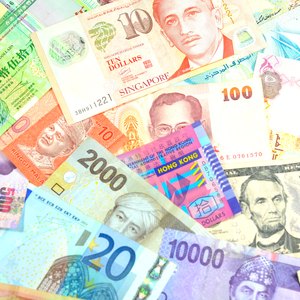
Like regular money orders, an international money order allows you to prepay an amount to use as a secure form of payment. An international money order is unique in that you can utilize it while traveling abroad. Thus, instead of using a check, credit card or cash, you can pay for an item with a money order. Keep in mind that money orders are not valid indefinitely, and each issuer has different rules. If unused in over 1 year, you can likely receive a reissued money order for a nominal service charge.
Know the Basics
Currently, the U.S. Postal Service (USPS) sells international money orders for a maximum of $700 ($500 for El Salvador and Guyana) at $8.55 each. There are 28 countries that accept the USPS money order, including Canada, Japan, Belize and Peru. Another method to purchase a money order is through MoneyGram or Western Union. Both companies have locations internationally, though policies vary regarding whether the payment will be accepted in a particular country. Additionally, you could purchase American Express Travelers Cheques, which American Express offers to account and non-account holders. The Travelers Cheques are accepted internationally and sold online as well as in most cities.
International Money Order Features
Money orders are printed documents that are similar in size to a check. As such, you cannot obtain a money order online and expect to receive it in the mail. If you see a website or an ad that claims to issue money orders, be weary as it is most likely a scam. While U.S. banks readily will issue a money order, remember that international money orders often state the words "international money order" on the document. Plus, a money order from a regional or local bank in the United States will unlikely be valid internationally because vendors will not want to accept payment from an unknown source.
Considerations When Purchasing
When traveling in foreign countries, you might be able to purchase "international money orders" in larger, urban cities, usually at a post office or a bank with international connections. However, the disadvantage you will face arises as you try to use the money order as payment. For instance, if you obtain an international money order while in Cuba, it will be difficult to find a business or vendor that will accept the money order. Furthermore, because the implementation of the euro, many European countries will not accept an international money order and will require you to exchange it at a bank into euros.
References
- USPS: International Money Orders
- Finder: USPS International Money Orders & Wire Transfers
- American Express: FX International Payments
- Transferwise: Step by Step Guide on Filling Out an International Money Order
- United States Postal Service. "Sending Money Orders." Accessed May 10, 2020.
- MoneyGram. "Send money your way." Accessed May 18, 2020.
- Western Union. "What Are Western Union Agent Locations?" Accessed May 17, 2020.
- U.S. Postal Service Office of Inspector General. "Modernizing the Postal Money Order," Page 5. Accessed May 17, 2020.
- Wells Fargo. "Wells Fargo Consumer and Business Account Fees." Accessed May 10, 2020.
- United States Postal Service. "Postal Facts." Accessed May 10, 2020.
- CVS. "CVS Health At a Glance." Accessed May 10, 2020.
- Walmart. "Money Orders." Accessed May 17, 2020.
- 7-Eleven. "Financial Services." Accessed May 17, 2020.
- Publix. "Customer Service FAQ." Accessed May 17, 2020.
- Kroger Money Services. "Money Orders." Accessed May 17, 2020.
- Kmart. "MoneyHub." Accessed May 17, 2020.
- Western Union. "Western Union and Meijer Ink Deal to Continue Longstanding Relationship." Accessed April 17, 2020.
Writer Bio
Maggie Gebremichael has been a freelance writer since 2002. She speaks Spanish fluently and resides in Texas. When she is not writing articles for eHow.com, Gebremichael loves to travel internationally and learn about different cultures. She obtained an undergraduate degree with a focus on anthropology and business from the University of Texas and enjoys writing about her various interests.

